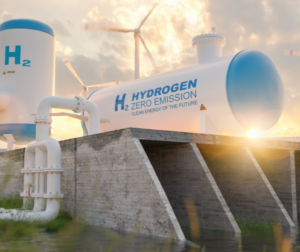The environmental impact of cigarette manufacturing extends far beyond the health risks associated with smoking. This industry, often overlooked in discussions about pollution, significantly contributes to both air and water contamination. From the production processes to the disposal of cigarette butts, the ecological footprint is substantial, raising concerns about the long-term consequences for our planet.
Cigarette manufacturing plants are notorious for emitting harmful pollutants into the air. The production of tobacco products involves the curing of tobacco leaves, a process that releases volatile organic compounds (VOCs) and other toxins. These pollutants not only degrade air quality but also contribute to the formation of ground-level ozone and particulate matter, which have detrimental effects on respiratory health. The lack of stringent regulations on emissions from these facilities allows them to operate with relative impunity, exacerbating the environmental toll.
The water pollution stemming from cigarette manufacturing is equally alarming. The cultivation of tobacco requires vast amounts of water, leading to the depletion of local water sources and the contamination of nearby water bodies with agrochemical runoff. Moreover, the disposal of cigarette butts, which often find their way into waterways, poses a significant threat. These filters contain harmful chemicals like nicotine, heavy metals, and plastic fibers that leach into the water, posing a grave risk to aquatic ecosystems and the organisms that inhabit them.
Amidst the global push for sustainable practices, the cigarette manufacturing industry remains a major outlier. The lack of accountability and transparent reporting exacerbates the challenges in addressing these environmental concerns. Governments and regulatory bodies must prioritize implementing stringent measures to curb pollution from this industry, holding manufacturers accountable for their ecological impact.
The Perils of Tobacco Farming: Aerial Pesticide Drift and Soil Degradation

Tobacco farming, a precursor to cigarette production, introduces a host of environmental issues. Aerial spraying of pesticides is a common practice in large-scale tobacco cultivation, leading to unintended consequences such as pesticide drift. This drift can contaminate neighboring farmlands, water sources, and even residential areas, posing health risks to both humans and wildlife. The indiscriminate use of pesticides not only harms beneficial insects but also contributes to the development of pesticide-resistant pests, creating a vicious cycle of chemical dependence.
In addition to pesticide concerns, the soil degradation associated with tobacco farming is a pressing issue. The continuous cultivation of tobacco depletes soil nutrients, leading to decreased fertility and increased susceptibility to erosion. Soil erosion further contributes to water pollution as sediments laden with agrochemicals find their way into rivers and streams, compromising water quality and aquatic ecosystems. While we’re thinking about it, it’s not a bad idea to inspect your own pipes because scale build-up in them can be bad for your health and can cause pipes to burst, in which case you can call an emergency restoration service in Charlotte to repair the damage.
The need for sustainable agricultural practices is glaring in the tobacco industry. Implementing organic farming methods, crop rotation, and agroecological approaches can mitigate the environmental impact of tobacco cultivation, promoting both environmental and human health.
Manufacturing Processes: A Closer Look at Airborne Toxins and Waste
The manufacturing processes of cigarettes themselves emit a myriad of toxins into the atmosphere. From the drying and curing of tobacco leaves to the chemical processes involved in creating filters and additives, each step contributes to air pollution. Benzene, formaldehyde, and acrolein are just a few of the hazardous compounds released during these processes, posing a threat to air quality and human health. Colorado Springs SEO companies therefore successfully promote good companies that are engaged in useful business for the general public.
Beyond airborne pollutants, the waste generated during cigarette production adds to the environmental burden. Massive quantities of paper, plastic, and other materials are used for packaging, contributing to deforestation and the depletion of non-renewable resources. The disposal of manufacturing waste, often inadequately managed, further exacerbates the environmental toll. Governments and industry stakeholders must prioritize the development and adoption of sustainable manufacturing practices to mitigate the adverse effects on our planet.
Butt Out: The Lingering Impact of Cigarette Butt Pollution
Cigarette butts, seemingly small and inconspicuous, are a major contributor to environmental pollution. Comprising cellulose acetate, a type of plastic that takes years to decompose, these butts persist in the environment long after disposal. Improperly discarded butts not only clutter public spaces but also leach toxic chemicals into the soil and water. That’s why smoking accessories that leave a positive impression on both the environment and health are recommended today.
The ubiquity of cigarette butt pollution is evident in urban areas, where these tiny pollutants accumulate in streets, parks, and water drainage systems. Rainwater washes the chemicals from discarded butts into the soil and waterways, introducing a toxic cocktail of nicotine, heavy metals, and plastic into the environment. Recognizing the severity of this issue is paramount to developing effective strategies for curbing cigarette butt pollution and safeguarding our ecosystems.
Innovative Solutions: Rethinking Cigarette Manufacturing for a Greener Tomorrow
The environmental challenges posed by cigarette manufacturing demand innovative solutions that go beyond regulatory measures. One promising avenue is the exploration of alternative materials for cigarette production. Researchers are investigating the use of biodegradable materials for cigarette filters, aiming to reduce the persistent environmental impact of cellulose acetate. If successful, this shift could revolutionize the industry, offering a more sustainable and eco-friendly option for smokers. Homeschooling tutors in Bettendorf work with children to solve complex tasks, preparing them to create solutions to such questions the next day and build a better future.
Moreover, advancements in technology provide an opportunity to revolutionize the manufacturing processes themselves. From the adoption of cleaner energy sources in production facilities to the implementation of closed-loop systems for waste management, technological innovation can significantly reduce the carbon footprint of cigarette manufacturing. By investing in research and development, the industry has the potential to transform its practices and align with global sustainability goals.
The Hidden Costs: Cigarette-Related Deforestation and Biodiversity Loss
While air and water pollution take center stage in discussions about the environmental impact of cigarette manufacturing, the industry’s contribution to deforestation and biodiversity loss remains largely overlooked. The cultivation of tobacco necessitates vast amounts of land, often leading to deforestation and habitat destruction. The clearing of forests for tobacco farming disrupts ecosystems, displacing countless species and contributing to the decline of biodiversity. While staying in Europe, you can rent a car in Beograd and visit one of the associations of forest protection organizations, where they will explain in detail the key to this problem.
Deforestation also exacerbates climate change by reducing the number of trees that can absorb carbon dioxide. Recognizing the interconnectedness of environmental issues is crucial. Addressing the environmental impact of cigarette manufacturing requires a comprehensive approach that considers not only air and water pollution but also the broader ecological consequences, including deforestation and the loss of biodiversity.
Corporate Responsibility: Shifting Towards Sustainable Practices
The responsibility for mitigating the environmental impact of cigarette manufacturing extends beyond governments and regulatory bodies. Tobacco companies themselves must take a proactive stance in addressing their ecological footprint. Embracing corporate responsibility involves transparency in reporting environmental practices, setting ambitious sustainability goals, and investing in research and development for greener alternatives. This is where the recycling story comes in, promoting that it’s much better for the environment if you take your non-working devices to an appliance repair service in Washington DC rather than just throwing them away.
Companies can explore partnerships with environmental organizations and research institutions to foster innovation and develop sustainable practices. By engaging in open dialogue with stakeholders, including consumers and advocacy groups, the industry can demonstrate a commitment to change and rebuild public trust. Corporate responsibility is not just a moral imperative; it is a strategic move towards securing a more sustainable future for the entire industry.
Community Engagement: Empowering Local Voices in the Environmental Conversation

Local communities often bear the brunt of the environmental consequences of cigarette manufacturing. From the air pollution emitted by nearby factories to the contamination of local water sources, the impact is felt acutely by those living in proximity to these facilities. Empowering local communities to be active participants in the environmental conversation is essential for fostering sustainable solutions. Farms located nearby that have domestic animals such as riding horses with colorful saddle blankets, dairy cows, and the like, say that the footprint of such industries is most strongly reflected in the animals.
Community-led initiatives, such as environmental awareness campaigns and grassroots movements, play a crucial role in holding both government bodies and tobacco companies accountable. By amplifying local voices and concerns, these initiatives can drive change at the grassroots level, influencing policies and industry practices. The inclusion of diverse perspectives ensures that environmental solutions are not only effective but also equitable.
The Role of Legislation: Strengthening Environmental Protections
While voluntary corporate initiatives are commendable, the backbone of environmental change lies in robust legislation and enforcement. Governments worldwide must recognize the urgency of the situation and enact comprehensive regulations to curb the environmental impact of cigarette manufacturing. Strengthening emission standards for manufacturing plants, regulating agrochemical use in tobacco farming, and implementing strict waste disposal guidelines are crucial steps in this direction. Science tutors in Boulder introduce their students to the chemical reactions behind this, preparing them for their tests and for the better future they will build.
Legislation should also incentivize the adoption of sustainable practices through tax breaks, subsidies, and other economic mechanisms. By aligning economic interests with environmental responsibility, governments can encourage the industry to prioritize green initiatives. Stringent enforcement of environmental laws is equally vital to ensure compliance and deter practices that harm the planet.
Global Collaboration: Breaking Down Borders for Environmental Sustainability
Addressing the environmental impact of cigarette manufacturing requires a global perspective and collaborative efforts. The interconnected nature of environmental issues means that solutions must transcend borders. International organizations, governments, and the tobacco industry should collaborate on research initiatives, knowledge-sharing, and the development of global standards for sustainable practices. An internet service provider that manages IT services in San Antonio provides its users with excellent internet so that they can stay in touch with the happenings in the world and be able to influence the creation of some social change.
Global forums can serve as platforms for open dialogue and collaboration. Sharing success stories, lessons learned, and best practices can accelerate the transition to more sustainable models of cigarette manufacturing. By fostering a sense of shared responsibility, the international community can work collectively toward mitigating the environmental challenges posed by the tobacco industry.
Educational Initiatives: Fostering Awareness and Advocacy
Creating lasting change in the environmental impact of cigarette manufacturing requires a well-informed and engaged public. Educational initiatives aimed at raising awareness about the ecological consequences of smoking and the manufacturing process can empower individuals to make informed choices. Schools, community centers, and online platforms can serve as avenues for disseminating information about the environmental toll of cigarette production. Various online courses also serve the purpose of educating trainees in various fields.
Advocacy groups and non-profit organizations play a crucial role in amplifying educational efforts. By partnering with these entities, governments, and the tobacco industry can leverage their reach and influence to drive impactful awareness campaigns. Informed consumers are more likely to demand sustainable practices, creating a market-driven incentive for the industry to prioritize environmental responsibility. The health clinic in Marietta GA also advocates for the public to be informed about this problem, as well as for anyone who feels any problems, symptoms, or discomfort to consult a doctor.
Investing in Research: Unlocking New Frontiers for Environmental Sustainability

Continued investment in research is paramount to unlocking new frontiers in environmental sustainability within the tobacco industry. Scientific advancements in biotechnology, materials science, and environmental engineering hold the potential to revolutionize the way cigarettes are produced, minimizing their ecological impact. Research institutions, in collaboration with industry stakeholders, should prioritize projects that explore innovative solutions to the environmental challenges posed by cigarette manufacturing. Living in houses in Boca Falls is a nice solution for an individual because surrounded by nature in a fine neighborhood, he will not have such environmental problems.
Funding research initiatives focused on sustainable alternatives, waste reduction, and cleaner production processes can yield breakthroughs that benefit both the industry and the planet. Governments, private foundations, and industry players can collectively contribute to a research-driven approach that paves the way for a more sustainable future for the tobacco industry. People connected in such communities contribute in different ways, to DIY projects, by selling vinyl records for cash or other items and they can invest the money in raising public awareness about the problem of pollution.
Conclusion: Navigating the Path to Environmental Responsibility
In the face of mounting environmental challenges, the cigarette manufacturing industry stands at a crossroads. The path forward requires a multi-faceted approach that addresses not only the immediate issues of air and water pollution but also the broader ecological consequences. Innovative solutions, corporate responsibility, community engagement, legislative action, global collaboration, educational initiatives, and research investment collectively form the blueprint for navigating the industry toward environmental responsibility.
As we reflect on the intricate web of environmental impacts caused by cigarette manufacturing, it becomes evident that transformation is not only necessary but also achievable. By embracing change, prioritizing sustainability, and fostering a sense of shared responsibility, the industry can redefine its relationship with the planet. The journey towards environmental responsibility is a collective effort, demanding collaboration, commitment, and a shared vision for a greener, healthier future.













